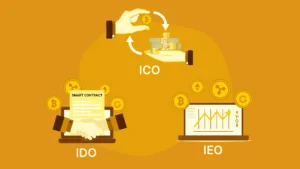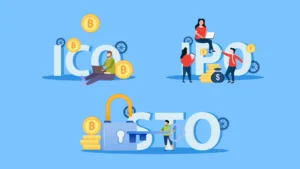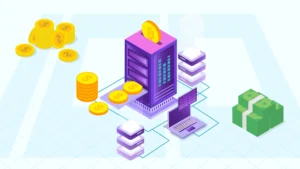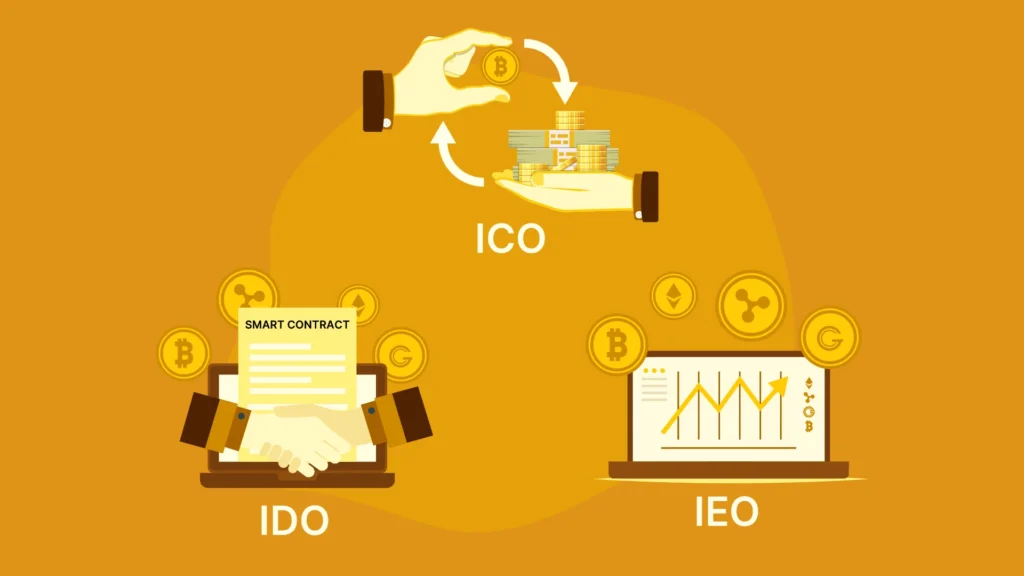
Imagine discovering a revolutionary blockchain idea that could change how the world invests, trades, or connects, but you need millions to bring it to life.
Traditional banks hesitate. Venture capitalists demand control. But what if you could raise global funds directly from believers in your idea, all through blockchain technology?
That’s exactly what ICOs, IDOs, and IEOs make possible, empowering innovators to raise capital directly from a worldwide crypto community. These fundraising models have reshaped the way blockchain startups grow, making funding more accessible, transparent, and inclusive.
In this blog, we’ll break down what ICO (Initial Coin Offering), IEO (Initial Exchange Offering), and IDO (Initial DEX Offering) mean, how they work, their key differences, advantages, risks, and why they remain at the core of the Web3 revolution.
The Evolution of Crypto Fundraising
Before blockchain, raising money for startups meant dealing with banks, venture capital firms, or IPOs. These traditional channels were costly, slow, and limited to accredited investors.
Blockchain technology changed everything by allowing token-based fundraising, where investors buy digital tokens representing utility, governance, or equity in a project.
This innovation birthed three major fundraising models-
- ICO (Initial Coin Offering) – The first decentralized fundraising wave.
- IEO (Initial Exchange Offering) – Exchange-backed fundraising for better security.
- IDO (Initial DEX Offering) – Fully decentralized, smart contract-based fundraising.
Each model represents a milestone in blockchain’s journey from centralized capital control to community-driven investment.
What Is an ICO (Initial Coin Offering)?
Definition
An Initial Coin Offering (ICO) is a blockchain-based crowdfunding event where a project sells newly created tokens to early investors, usually in exchange for cryptocurrencies like Bitcoin or Ethereum.
ICOs became massively popular in 2017 when projects like Ethereum, Filecoin, and EOS raised billions of dollars.
How It Works
- Whitepaper Release- The project releases a detailed document explaining its idea, utility, roadmap, and tokenomics.
- Token Creation- Tokens are issued on blockchain platforms like Ethereum (ERC-20 standard).
- Public Sale- Investors send crypto to the project’s wallet in exchange for tokens.
- Exchange Listing- After fundraising, tokens are listed for trading on exchanges.
Advantages
- Global Accessibility- Anyone can invest using crypto wallets.
- No Middlemen- Direct link between project and investor.
- High Liquidity Potential- Tokens can be easily traded once listed.
Risks
- Lack of Regulation- Many ICOs operated without oversight.
- Fraud and Scams- Some projects disappeared post-funding.
- Market Volatility- Token prices often drop sharply after launch.
Example
The Ethereum ICO in 2014 raised around $18 million, fueling the development of the world’s leading smart contract network. However, the rise of fraudulent ICOs later led regulators to demand stricter standards and investor protections.
What Is an IEO (Initial Exchange Offering)?
Definition
An Initial Exchange Offering (IEO) is a token sale managed by a centralized cryptocurrency exchange (CEX) rather than the project itself.
In this model, the exchange acts as a middleman, conducting due diligence, managing KYC (Know Your Customer) processes, and listing the token immediately after the sale.
How It Works
- Exchange Vetting- The exchange reviews the project’s credibility, code, and tokenomics.
- Token Sale- Investors participate directly through their exchange accounts.
- Immediate Listing- Once the sale ends, tokens become tradable on that exchange.
Advantages
- Increased Trust- Exchange verification minimizes fraud risk.
- Instant Liquidity- Tokens trade right after launch.
- Secure and Convenient- The exchange handles compliance and distribution.
Risks
- Centralization- Projects depend heavily on exchange reliability.
- Listing Costs- High fees may make it inaccessible for small startups.
- Limited Access- Only users of that exchange can participate.
Example
BitTorrent (BTT) raised $7.2 million in just 15 minutes through Binance Launchpad, marking one of the fastest and most successful IEOs ever.
What Is an IDO (Initial DEX Offering)?
Definition
An Initial DEX Offering (IDO) is a fundraising model conducted on a decentralized exchange (DEX) using smart contracts.
Unlike IEOs, IDOs remove centralized intermediaries entirely, letting investors buy tokens directly through liquidity pools on decentralized platforms like Uniswap, PancakeSwap, or Raydium.
How It Works
- Token Minting- The project creates and deploys its token on a blockchain.
- Liquidity Pool Creation- Tokens are paired with crypto assets (like USDT or ETH).
- Fair Launch- Investors purchase tokens directly via the DEX.
- Instant Trading- Tokens can be traded immediately after launch.
Advantages
- True Decentralization- No centralized authority controls the process.
- Instant Liquidity- Tokens are tradable immediately.
- Global and Inclusive- Anyone with a Web3 wallet can participate.
- Lower Costs- No exchange listing or compliance fees.
Risks
- Smart Contract Vulnerabilities- Coding flaws can lead to hacks or losses.
- Rug Pulls- Developers can remove liquidity suddenly.
- Front-running Bots- Automated systems can manipulate launch prices.
Example
Projects like SushiSwap, Polkastarter, and DAO Maker pioneered IDOs, allowing decentralized communities to invest early while maintaining transparency through smart contracts.
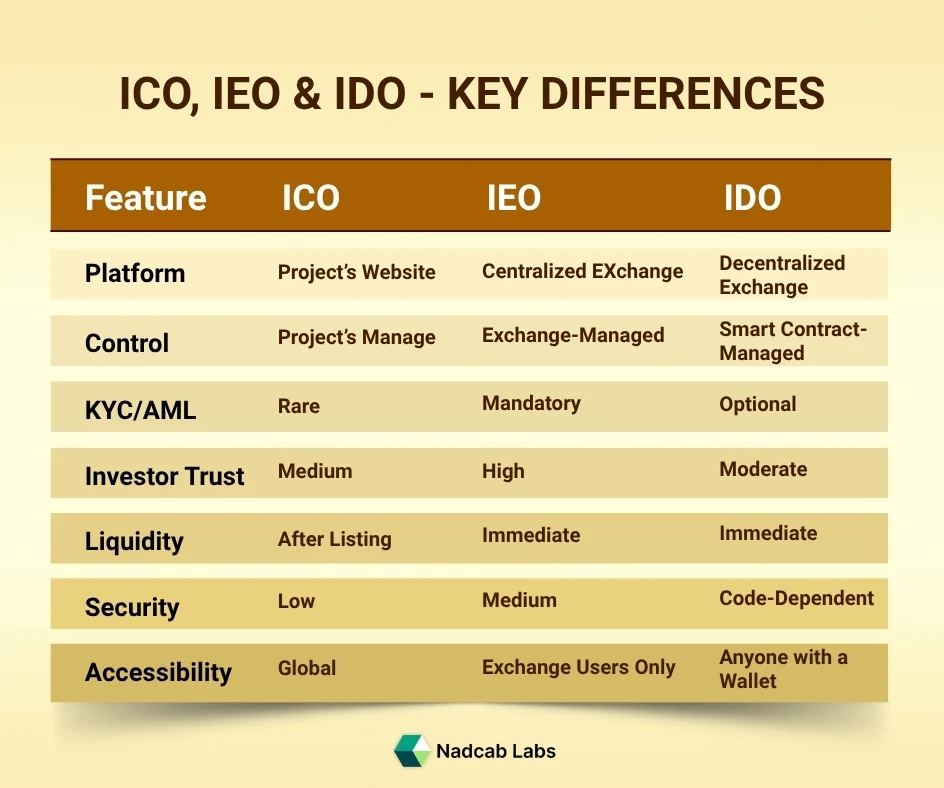
Why These Models Matter in the Crypto Economy
The emergence of ICOs, IEOs, and IDOs represents a paradigm shift in how funding happens.
Instead of relying on banks or venture capital, blockchain startups can raise capital globally from communities that believe in their vision.
For startups, these models offer:
- Fast access to global funding.
- Community engagement before launch.
- Independence from traditional financial institutions.
For investors, they provide-
- Early access to potential high-growth tokens.
- Opportunities to diversify crypto portfolios.
- A role in shaping blockchain innovation.
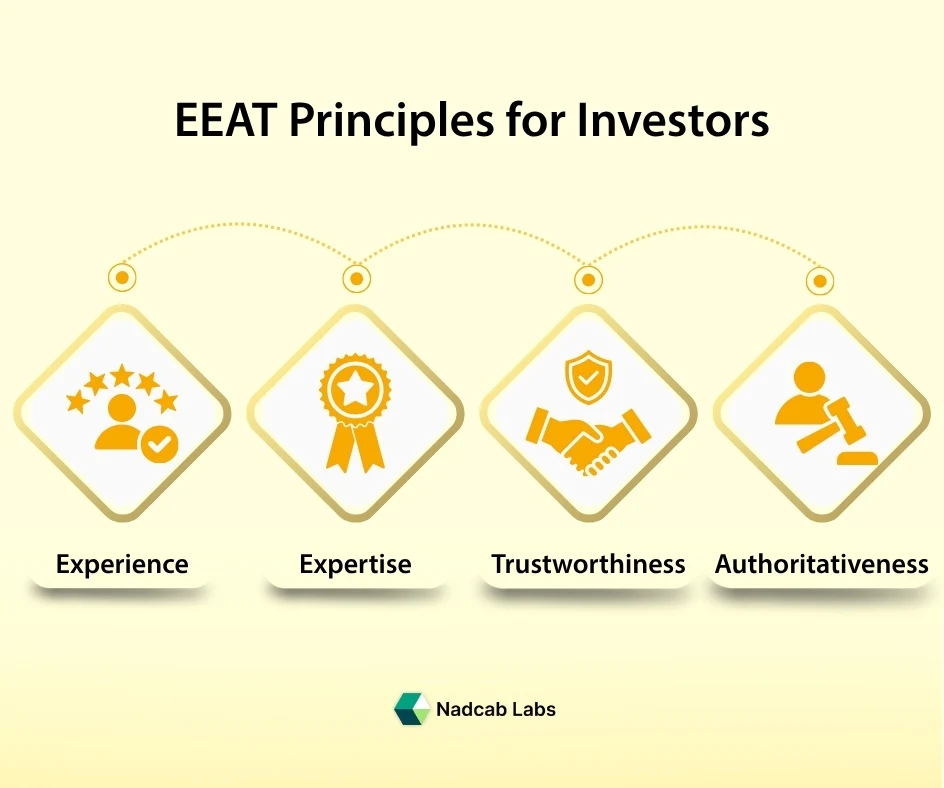
- The experience of the project team.
- The expertise is shown in the whitepaper.
- The authoritativeness of audits, partnerships, and advisors.
- The trustworthiness of the project’s communication and tokenomics.
How to Stay Safe While Investing
Crypto fundraising can be lucrative, but it’s also a magnet for scams. Here’s how to protect yourself:
- Read the Whitepaper Carefully- Look for technical clarity and practical goals.
- Verify Team Credentials- Research founders on LinkedIn, GitHub, or Twitter.
- Check for Audits- Reliable projects publish third-party audit reports.
- Understand Tokenomics- Watch for fair token distribution and vesting periods.
- Avoid Unrealistic Promises- Guaranteed profits are always red flags.
- Join Community Discussions – Transparency often shows through open communication channels.
Knowledge and skepticism are your best tools in this volatile industry.
The Future of Crypto Fundraising
The evolution of token fundraising is ongoing. New hybrid models are emerging, including:
- STOs (Security Token Offerings)- Tokenized securities under regulatory oversight.
- INOs (Initial NFT Offerings)- NFTs as a fundraising tool for creative and Web3 projects.
- RWA Tokenization- Bringing real-world assets like real estate and gold onto blockchain.
The future likely lies in a blend of regulation and decentralization, ensuring both investor safety and open access to funding opportunities.
Also Read: How Digital Fundraising is Revolutionizing the Global Economy
Discover Smart Crypto Investments!
Final Thoughts
ICOs, IEOs, and IDOs have each shaped the blockchain investment landscape in unique ways:
- ICOs opened the gates to global decentralized crowdfunding.
- IEOs introduced credibility and investor protection through exchanges.
- IDOs brought full decentralization, allowing anyone with a wallet to participate.
Together, they symbolize blockchain’s core principle: financial freedom through decentralization.
But while opportunities are vast, investors must rely on education, transparency, and due diligence to make informed, responsible decisions.
In the ever-evolving Web3 world, understanding these models means understanding the future of finance itself.
Are ICOs, IEOs, and IDOs legal?
The legality depends on each country’s crypto regulations. Some allow token sales under strict compliance, while others ban them completely. Always verify if the project follows KYC/AML guidelines and check local laws before investing to stay safe.
What’s the future of crypto fundraising?
Crypto fundraising is moving toward regulated and transparent models like STOs, INOs, and RWA tokenization. These combine decentralization with investor protection, ensuring safer participation and long-term growth.
Which is the safest option for investors?
IEOs are generally considered safest since exchanges verify projects before launch, reducing fraud risk. Still, investors should research independently and review project details, as even exchange-backed sales can involve financial risks.
What are the main risks of investing in token sales?
Common risks include scams, rug pulls, market volatility, and weak smart contracts. Some projects vanish after funding, so always review whitepapers, audits, and team credibility before investing.
What are some of the most successful ICOs or IEOs in crypto history?
Successful examples include Ethereum’s ICO (2014) raising $18M, Filecoin (2017) collecting $250M, and BitTorrent’s IEO (2019) raising $7.2M on Binance, all proving the potential of legitimate crypto fundraising.
How does an Initial DEX Offering (IDO) ensure decentralization compared to an IEO?
An Initial DEX Offering (IDO) ensures decentralization by using smart contracts on decentralized exchanges. Unlike IEOs, which rely on centralized platforms, IDOs let anyone participate directly with a crypto wallet.

